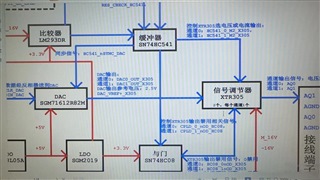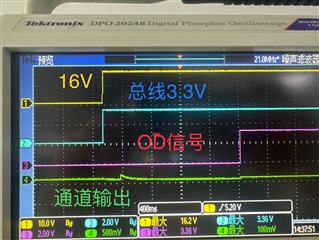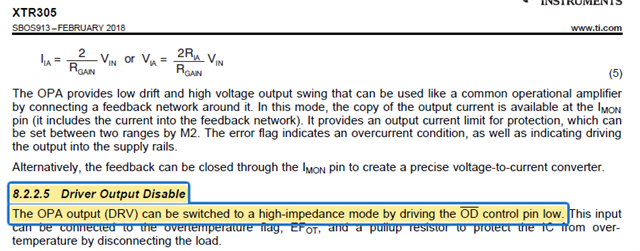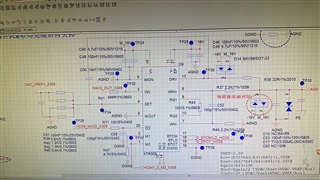Other Parts Discussed in Thread: XTR300, TIPD155, DAC8563
Hi team,
Our customer use XTR305 in such a system, XTR305 input is an DAC signal. When customer OD pin is low, if DAC has a output, the XTR305 has a small output at the same time .

Look the oscillosope waveform, the green is XTR305 output, purple is OD pin.

If OD pin is low, XTR305 output shoule be low? Or else?
And customer has another question, their DAC precision is 0.1%, but they found XTR305 precision is 0.3%. Is there any methods to make XTR305 output have the same precision like DAC output?






